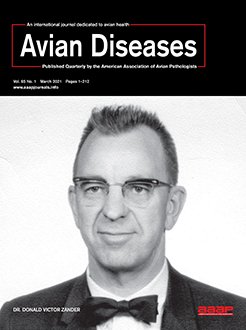With growing cross-disciplinary collaboration among researchers, it is increasingly important to record detailed methodology to prevent the repetition of preliminary experiments. The purpose of this paper is to explain the development of a coccidiosis challenge model for the investigation of dietary interventions to coccidiosis in broiler chickens. The objectives are to select a dose of mixed species coccidial vaccine and evaluate the suitability (ability to produce a consistent, marked change) of selected response variables important to nutritional studies at different times postinfection (PI). Coccivac-B and Coccivac-B52 (Merck Animal Health) were evaluated as the source of coccidia in three trials. Trials 1 and 2 were randomized complete block designs with four doses (0, 10, 20, or 30 times (×) label dose) of Coccivac-B administered to 12 replicate cages of six birds by repeater pipette (Trial 1) or gavaging needle (Trial 2). Trial 3 used a completely randomized design with 0× or 30× label dose of Coccivac-B52 administered by gavaging needle to six replicate cages of six birds. Birds were gavaged at 15 days of age, and response criteria were evaluated 7 days PI in all trials and again at 10 days PI in Trials 1 and 2. All means are reported in order of increasing coccidia dose with significance accepted at P ≤ 0.05. Broiler performance was not affected by coccidia in Trials 1 or 3 but grew poorer with increasing dose from 0 to 7 days PI in Trial 2 (body weight gain, 465, 421, 388, 365 g; feed to gain, 1.37, 1.47, 1.52, 1.58). As coccidia dose increased, nitrogen corrected apparent metabolizable energy decreased (Trial 1, 3387, 3318, 3267, 3170 kcal kg–1; Trial 2, 3358, 2535, 2422, 2309 kcal kg–1; Trial 3, not measured), while relative weight, length, and content for intestinal sections increased (Trials 1through 3). Gross lesion (duodenum, jejunum/ileum, ceca) and oocyst count scores (jejunum/ileum, ceca) increased with dose; however, gross scoring often suggested infection in unchallenged birds, a finding unsupported by oocyst count scores. At 7 days PI there was no correlation between midgut gross lesion score and midgut oocyst count score (r = 0.06, P = 0.705), but cecal scores were weakly correlated (r = 0.55, P < 0.001). Administering coccidia via repeater pipette (Trial 1) resulted in respiratory distress in some birds, while use of the gavaging needle (Trials 2 and 3) successfully induced intestinal damage in chickens without resulting in coccidia related mortality. Thirty times the label dose at 7 days PI resulted in the greatest number of response variables that produced a consistent, marked change. Therefore, consideration should be given to these conditions when designing future coccidiosis challenge models using vaccines as a source of coccidia.
BioOne.org will be down briefly for maintenance on 17 December 2024 between 18:00-22:00 Pacific Time US. We apologize for any inconvenience.
How to translate text using browser tools
30 November 2020
Development of a Coccidiosis Disease Challenge Model Using a Commercially Available Live Oocyst Vaccine
R. K. Savary,
T. A. Fiss,
D. A. Abbott,
J. A. Nicholds,
A. G. Van Kessel,
H. L. Classen
ACCESS THE FULL ARTICLE

Avian Diseases
Vol. 65 • No. 1
March 2021
Vol. 65 • No. 1
March 2021
Coccidiosis vaccination
Dose response
gavaging technique
sampling day
vaccine formulation




